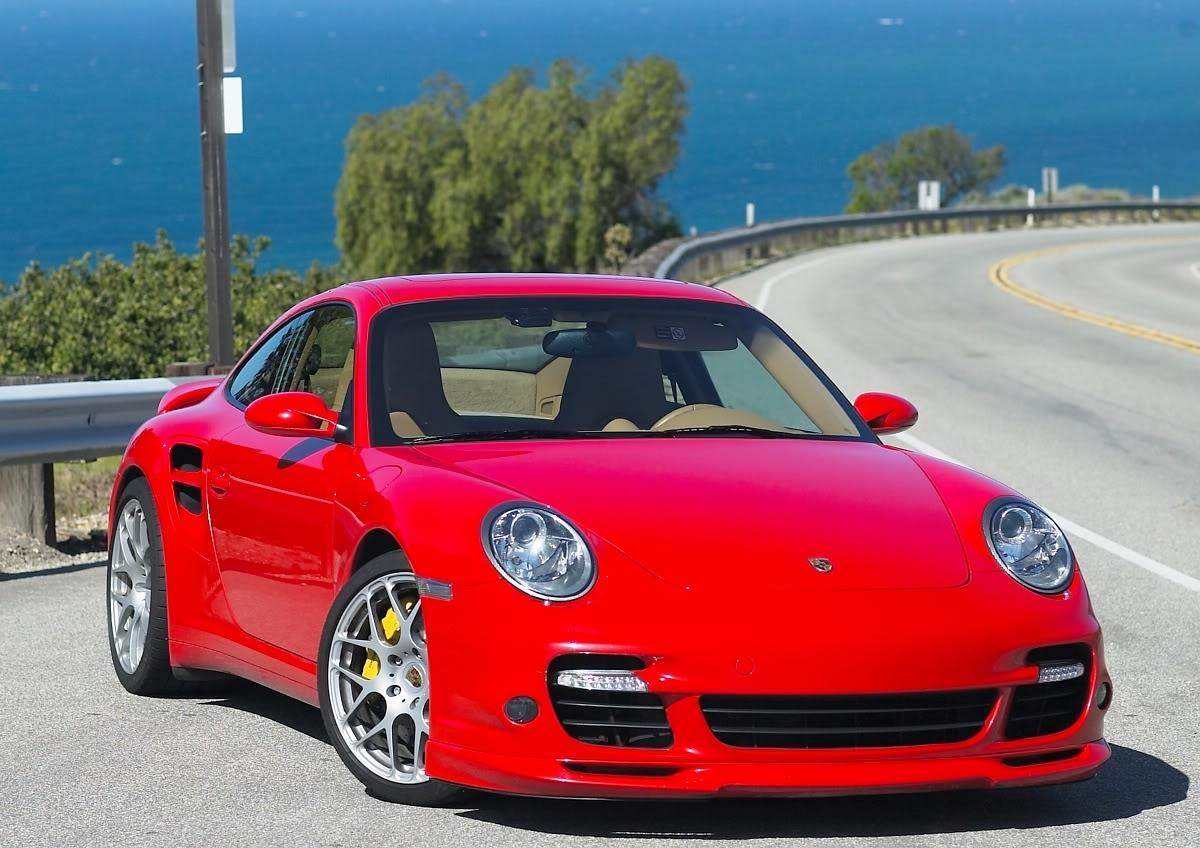You must be logged in to rate content!
5 minute(s) of a 612 minute read
7-2-2013
7-2-2013
Suspension Mods Overview:
Suspension mod is easier to understand if you categorize the modifications. Then all of sudden, things will seem so simple ;-) and not so intimidating. I will arbitrarily create 4 categories:
1. Stiffer springs: this is the single most important mod in the Turbo and will transform the car. It is accomplished by using lowering springs (I prefer coilover but lowering springs are simpler, less costly, and also work well) or using coilover (springs + shock absorber) such as those made by Bilstein or KW/JRZ/Moton/etc. Positives: Stiffer and lower are almost always better in a sports car: less weight transfer (lower), less body roll (sitffer), less dive and squat, more precise response. Negatives: Ride versus handling trade-off is forever present - the law of physics. As handling improves, ride will suffer. For street driving, don't use Moton or JRZ because they are too stiff, KW is also on stiff side.
2. Alignment: involves toe, caster, camber. For all practical purposes, all you need to worry about in the Turbo is to increase front negative camber. Stock is -.8 or whatever, you want to increase this to minus 1.2 or so (the max possible). Positives: Negative camber increases cornering force/traction of the tire (allows you to corner faster), decreases understeer which is an inherent problem with AWD 997.1 Turbo (complicated, pls just trust me this is the case). Negatives: Excessive & uneven tire wear and straight-line traction/acceleration could be affected adversely if over-done.
3. Stiffer "other" components: This would fall into 2 categories:
A. Sway bar: used to fine tune the system, in particular the understeer/oversteer behavior. After market sway bars are not only stiffer, they have adjustable stiffness. In the AWD Turbo with inherent understeer trait, the recommended setting is soft front, stiff rear, to decrease understeer. Note that sway bar on stiff setting could have major effect on the comfort of your ride (very un-comfortable). Positives: Decrease body roll, adjust understeer/oversteer, stiffer front sway bar makes steering firmer and feel more precise. Negatives: Decreases ride comfort.
B. After market suspension links that use solid metallic bushing/joint, in place of stock rubber/neoprene bushing/joint. The links include rear upper links (dog bones), toe control link, thrust arm bushing, front camber plate, drop links, etc. Positives: Solid links increase precision and make cars feel more "planted"/precise. Negatives: Increase noise, vibration, harshness, some more than others. Also, these are wear-and-tear items and need to be checked periodically and replaced when the joints become loose (metallic joints/links don't last as long as rubber/neoprene joints/links).
4. Tires: Don't under-estimate this major component of suspension system, and never race another car that has superior tires! This means: R compound tires such as Michelin Cup or Pirelli Corsa. Positives: have inherent advantages: stickier rubber, stiffer wall. Negatives: Dangerous on wet roads (no traction, aqua-plane), takes time to warm up, noisy & stiff especially when old.
sanham, the key to this thread is page 1 with the summary and index; I went into rambling monologue mode ![]() somewhere along the line but everything that is important is on page 1, for example the suspension overview I repost above (posted here because it's relevant to my answer below).
somewhere along the line but everything that is important is on page 1, for example the suspension overview I repost above (posted here because it's relevant to my answer below).
Ok back to your question,
1. Please remember my observation of drop link reducing extraneous rear motion of Turbo was made with a car with Bilstein and GMG sway bars on board (in other words a stiffer car than your stock), whether the same thing applies to your stock car I don't know. Yes it will stiffen the stock bar, but I don't know how much it will affect the extra motion.
2. The drop link increases the effectiveness of the sway bar, and will make stock sway feels stiffer, but it's not a replacement for a proper set of sway bar. So the answer is yes I would recommend stiffer sway bars as well.
3. Besides the drop link, other after-market components that use heim joint instead of plastic/rubber bushings will control the rear motion of the Turbo, such as rear toe link (which I don't have but is very highly recommended by tuners).
4. That said, if you are looking for a transformation of the driving experience, and cost is an issue, then my vote for the first component to be changed is actually for stiffer springs (whether lowering springs such as GMG or Techart, or coilover such as Bilstein), second, sway bar, and last drop link. IMHO, the springs (and tires) are the heart and soul of the suspension system; they control weight transfer (body roll), a key parameter of suspension tuning. Subjectively this is what makes a sports car feels like a sports car; objectively the reduction in weight transfer makes you faster in a corner. So change springs first, then fine tune with sway bar, then other components (drop link, rear toe link, etc.) are used primarily to further control unwanted motion of the car, and yet more components to increase camber (lower control arm and camber plate). All at the cost of some degree of comfort of course.
Latest shot of my baby :-), background is Southern Cal coast line:
